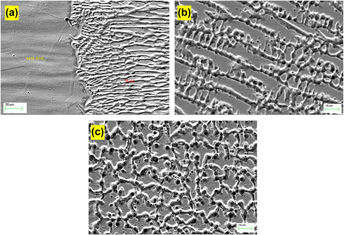Article contents
Studies on the weldability, microstructure and mechanical properties of flux assisted Nd:YAG laser welds of AISI 904L
Published online by Cambridge University Press: 05 August 2015
Abstract

This research article investigates the effect of SiO2 flux on Nd:YAG laser welding of 5 mm thick plates of super-austenitic stainless steel, AISI 904L. Microstructure studies revealed multidirectional grain growth comprising columnar and cellular dendrites along with a prominent, fine equiaxed dendritic growth at the centerline of the fusion zone. Tensile studies showcased the fracture at the fusion zone in all the trials. The average tensile strength reported for the flux assisted laser weldments was found to be 587 MPa which was slightly lower than the parent metal. The impoverishment of tensile strength could be attributed to the formation of centerline equiaxed grains. Similarly the impact toughness of the joints was found to be 58 J. The studies demonstrated the possibility of using a 2 kW Nd:YAG laser welding machine to weld 5 mm thick plate with the use of SiO2 flux. A detailed study on the structure–property relationship of flux assisted Nd:YAG laser weldment was carried out using the combined techniques optical microscopy, scanning electron microscopy, and energy dispersive x-ray analysis.
- Type
- Articles
- Information
- Copyright
- Copyright © Materials Research Society 2015
References
REFERENCES
- 6
- Cited by




